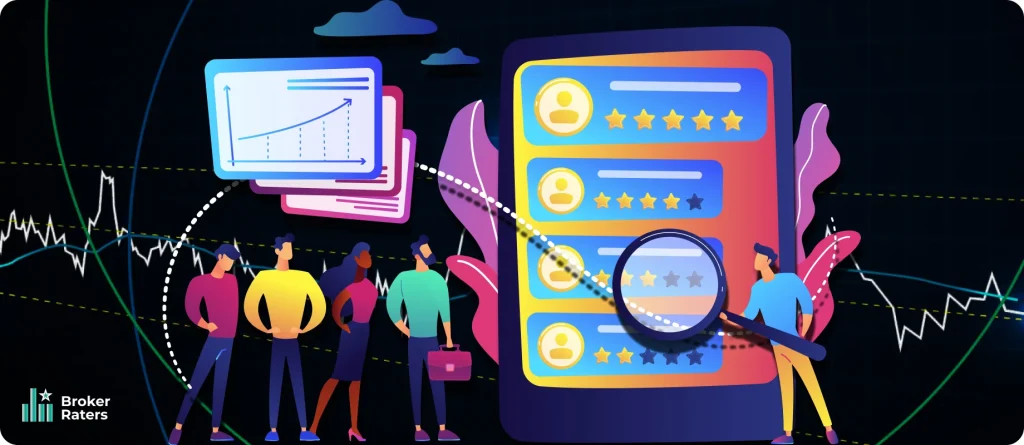Claire Maumo has experience in investment banking, strategic consultancy, and journalism. She has a Bachelor’s degree in Business Management and a Master’s in finance. She has a knack for making complex concepts easy to understand. Her primary focus is on crypto, blockchain, and financial instruments. Follow her for expert insights on trading and investment.
We may receive compensation from our partners for placement of their products or services, which helps to maintain our site. We may also receive compensation if you click on certain links posted on our site. While compensation arrangements may affect the order, position or placement of product information, it doesn’t influence our assessment of those products.
If saving your child’s education future is a priority, one of the most valuable tools to Canadian families is a Registered Education Savings Plan (RESP). Not only does it allow you to save for future post-secondary education, but it also allows the user to access government incentives like the Canada Education Savings Grant (CESG) and the Canada Learning Bond (CLB).
But with so many RESP providers available in Canada, it may be overwhelming to select the best. That is why this article will walk you through the key considerations, how to compare RESP providers, and making the final decision so that you pick the most suitable RESP provider for your family’s requirements.
Factors to Consider When Choosing an RESP Provider

The right RESP provider can make a difference on how your savings grow, how much flexibility you have, and how convenient it is to administer the plan. The best RESP provider in Canada will offer competitive rates, low fees, excellent customer service, and a user-friendly platform. Choosing the wrong provider could mean high fees, limited investment choices, or poor customer service, which could negate your savings plans.
That aside, see the following in order to pick the best RESP provider in Canada.
- Grant Maximization
Government grants, such as the Canada Education Savings Grant (CESG) and the Canada Learning Bond (CLB), can truly maximize your RESP savings. Some vendors will make the grant request process easy for you, so you receive the maximum amount you’re eligible for. It’s a good idea to choose a vendor that actively helps you get these grants and also informs you about other provincial incentives.
- Fee Structure
RESP providers charge varying fees that can impact your savings in the long term. Understanding how the fees are structured will allow you to determine the overall cost of maintaining your RESP. Some providers have transparent, low-fee structures, but others have hidden charges. Carefully reading the fee schedule of each provider will prevent any future surprises.
- Fee Amounts
Other than the structure, the actual fee cost varies widely among RESP providers. Common fees include account opening fees, maintenance fees per year, investment management fees, and withdrawal penalties. Group RESPs, in particular, have additional fees due to administrative costs. Comparing the total fees among providers ensures you select an option with the highest potential for your savings.
- Investment Options
Investment growth is a vital element of the long-term value of your RESP. Some providers allow you to choose from an extensive universe of available investments such as mutual funds, ETFs, GICs, and stocks, but other providers have pre-set portfolios. Your comfort level with taking risk and desire for managing investments should guide you in choosing the provider.
- Minimum Deposit Requirements
A few RESP providers have a minimum opening deposit to create an account. While banks and credit unions may allow you to start with a low sum, group scholarship plans will more likely need greater initial contributions. Ensuring the minimum deposit aligns with your financial situation will make the RESP affordable and sustainable in the long term.
- Deposits, Withdrawals, and Transfers Flexibility
Flexibility when handling your RESP funds is the key. Others have unlimited penalty-free deposits and withdrawals, while others are subject to limits, especially on group plans. An understanding of withdrawal conditions, such as eligibility for Educational Assistance Payments (EAPs), will ensure that you can access cash when your child goes into post-secondary school without paying extra penalties.
- Reputation and Customer Service Reviews
A provider’s reliability and level of customer service will have a major impact on your experience. Checking customer feedback, ratings, and reviews from other parents will provide you with insight into how account management, withdrawal, and customer support are handled. Choosing a provider with a superb record of reliability and active service will ensure you.
- Types of RESPs
Most RESP providers offer different kinds of RESPs, including individual, family, and group plans. Individual RESPs are best for a single beneficiary, whereas family RESPs suit families with more than one child. Group RESPs, sponsored by scholarship plan dealers, include compulsory contributions and perhaps stricter conditions. Being aware of the difference will help you make the best choice of plan for yourself.
- Educational Resources
Certain RESP providers offer you more than the simple savings account in the form of useful educational resources. They could be investment manuals, financial planning tools, and RESP benefit-maximizing guides. An educational resource provider can assist you in making informed contribution, investment, and withdrawal choices.
Comparing RESP Providers

Since there are many RESP Canada providers, a comparison of RESP providers on different parameters will help you make the right choice. Banks, credit unions, investment companies, and group scholarship providers offer different things, so their weaknesses and strengths need to be compared.
- Banks and Credit Unions
Banks and credit unions are part of the most popular RESP providers in Canada. RBC, TD, and Scotiabank offer RESP plans with stability, low fees, and multiple investing options. They are best for those who make use of the services of conventional banks and desire hassle-free management of the investments.
- Investment Firms and Online Brokers
For the investor who enjoys investing on their own, there are RESP accounts offered by online investment brokerages and companies. These websites are ideal for the investor who doesn’t care to put their own portfolio together and needs inexpensive investment vehicles that are low-cost and have low fees.
- Group Scholarship Plan Providers
Group scholarship plan providers sell pooled RESPs with fixed contributions and a monthly or annual investment schedule. Though the plans could suit those in need of a disciplined savings strategy, they are charged high membership fees and penalty upon withdrawal.
Making the Final Choice

Upon studying various RESP providers, choosing the final option is a matter of aligning your selection with your investment needs and financial goals. Ask yourself the following questions:
- Which has the best fee per performance ratio?
- Is the provider appropriate for the amount of investment option and flexibility I need?
- Does the provider offer the level of customer support and service I need?
- Are there other considerations that make one provider better than another?
Trust your gut and choose the provider that best aligns with your economic objectives and individual tastes. In the event of necessity, a consultation with a financial advisor can assist further to make the most educated choice in choosing the best RESP provider in Canada.
How to Open an RESP with Your Chosen Provider
Once you’ve selected the most suitable RESP provider in Canada, the next step is opening the account. It’s easy but has to be done carefully so as to capture all the perks available.
Once you have found the best RESP provider in Canada, it is not a difficult process to open the account. You will need to present all the documentation that they require, including your Social Insurance Number (SIN), your child’s SIN, and identification for the both of you. Some of the providers will require some additional documents, such as proof of residence or income, especially for submissions for government grants.
Decide if an individual, group, or family RESP is suited to your situation. Individual and family plans have more flexibility on contributions and withdrawal, whereas the group RESPs come with an outlined contribution program with more limitations on withdrawals.
Most RESP providers offer more than one method of applying, i.e., online, in person, or over the phone. Ensure that the information on the application form is accurate and have supporting documents ready. Providers may require a verification process before the account will be in effect.
Choosing how much you want to contribute and how you will plan your contributions is a key element to successful management of your RESP. Most providers offer automatic contribution plans and will accept monthly, yearly, or a lump sum contribution based on your budget.
To maximize your RESP savings, ensure that your provider applies for the available government grants on your behalf. The Canada Education Savings Grant (CESG) and Canada Learning Bond (CLB) provide additional funds that will be deposited directly into your RESP account. Some providers streamline this process, making it easier to access these benefits without extra paperwork.
Monitoring your RESP account from time to time will keep it on track with your long-term education savings goals. Monitor investment performance, monitor fees, and rebalance contributions based on these. If conditions have changed, you may be required to change your investment strategy or increase contributions to maximize returns. All providers offer online account management facilities that allow you to monitor your savings and make adjustments at your convenience.
Conclusion
When it comes to choosing the best RESP provider in Canada, the key is to prioritize your family’s unique needs and long-term goals. Take your time comparing and researching different RESP providers and closely note items highlighted above. Don’t rush into making a decision. This is an investment in your child’s future, and the correct provider can be the difference between success for your savings growth or failure. Remember, the best RESP provider for one family is not the same for another, so focus on what will work for your financial situation and educational goals. By making an informed choice and starting early, you’ll be well on your way to building a solid foundation for your child’s post-secondary education.
